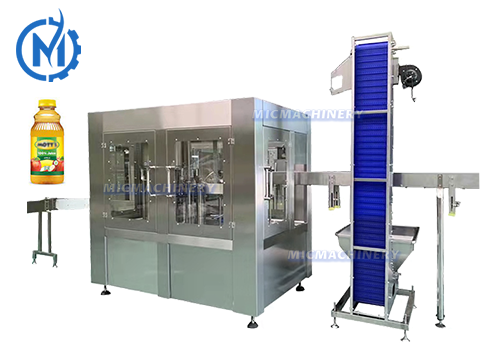MIC12-12-5 Fully Automatic Juice Bottle Filling Line(3000-5000 BPH)
- E-mail: sales8@micmachinery.com
- Mobile: 0086-13771181029
- Whatsapp: 0086-13771181029
- Wechat: 0086-13771181029
- Shipment: exporting country
- Customer reviews: click on
MIC12-12-5 juice Bottle filling line is a kind of professional filling machine for mango juice, litchi juice , orange juice, apple juice and other Fruit and vegetable juice roduction. It is made of high quality SUS304 stainless steel. Main components are processed precisely by CNC machine tool. The machine adopts advanced photo electricity to detect running status. No bottle no filling. It realize man-machine conversation because of applying touch screen for operation
1) Bottle is entered by air conveyor, the speed of bottle entering is fast and bottle shape isn’t changed because of adopting hanging clamping bottleneck way
2) Adopting clamping bottleneck way to wash bottle mouth and avoid touching screw mouth, adopting clamping bottleneck way in the whole conveying process. When bottle type changes, you need to change the board related with bottle diameter
3) Filling adopts cylinder feeding structure, filling valve adopts high filling speed and mass flow rate valve which control liquids level accurately and without loss.
4) Screw capper adopts French advanced technology which cans screw cap promptly when clamping bottle.
5) The PLC and transducer are chosen from international famous brand, such as OMRON, MITSUBISHI.
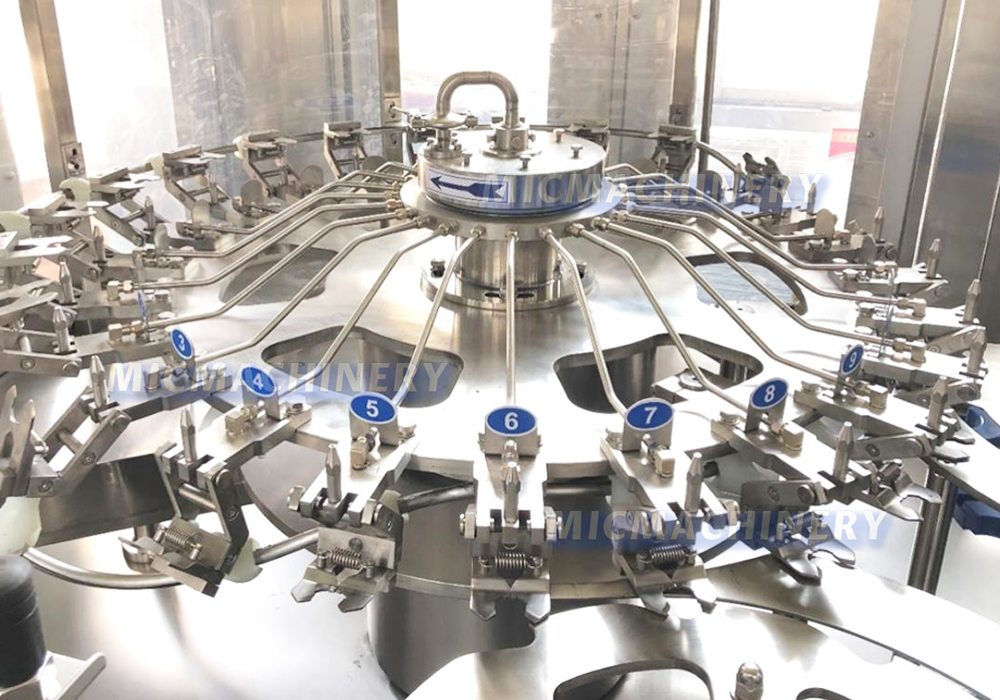
The bottle is turned upside down and centered above a spraying nozzle which directs a stream of rinse water into the bottle. After the draining period the bottle is turned over to an upright position again.
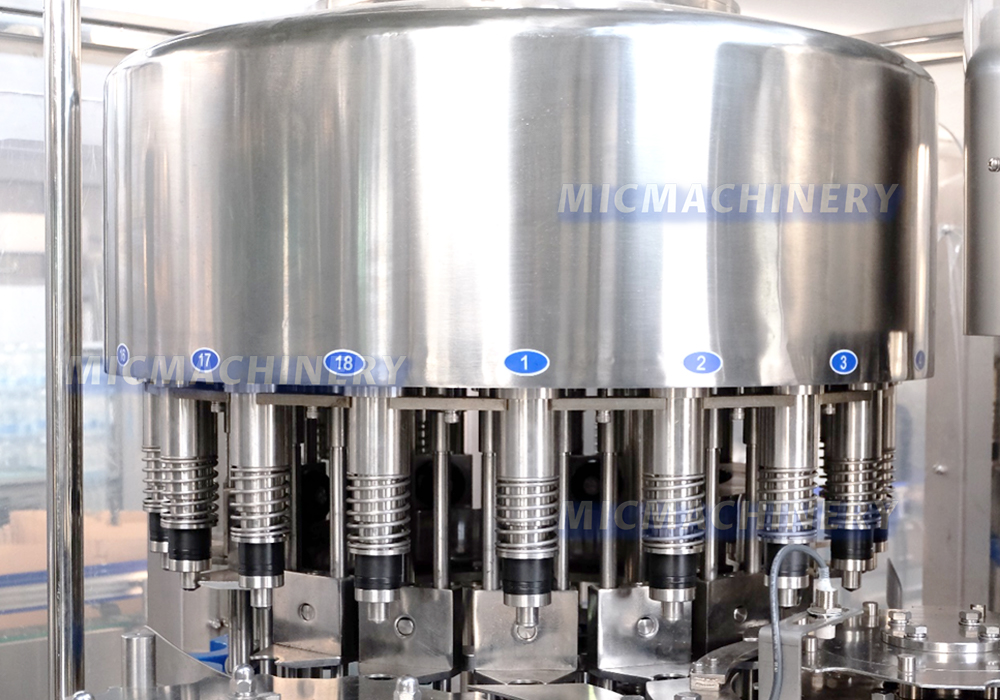
Rotary wheel fully made of stainless steel SUS 304. Filling valves are made of SUS316L. Filling valves are reasonably structured with accurate filling. Bottles go up and down in the function of cam through elevator, to process filling with contact to bottle-mouth.
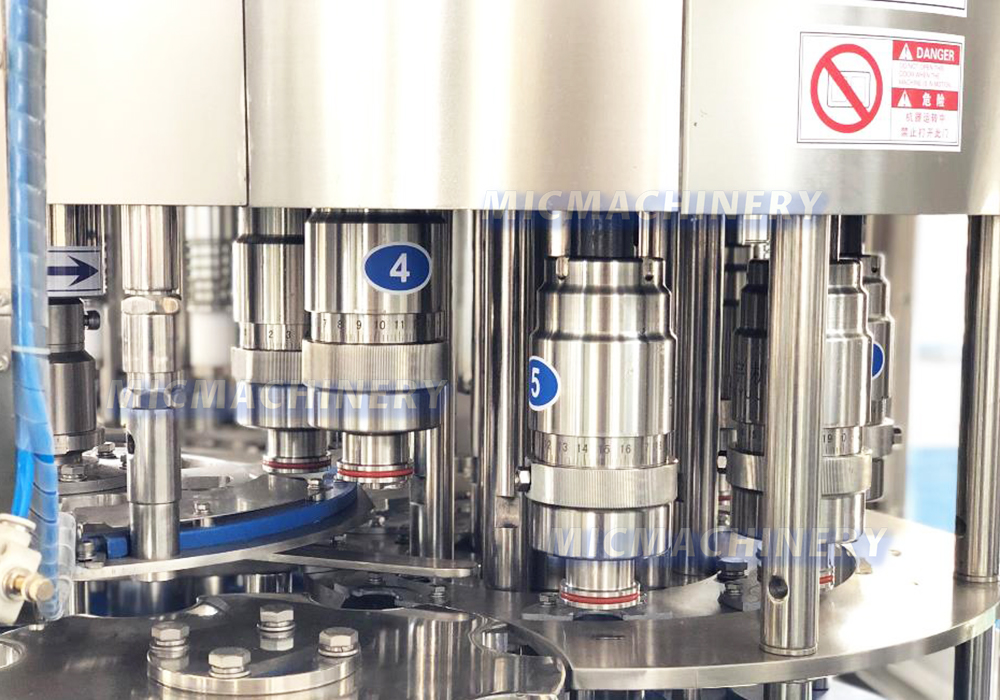
Cap distributing chute is equipped with a photocell switch to stop the capper when there is no cap inside the chute. The capper is equipped with inlet bottle detection switch.
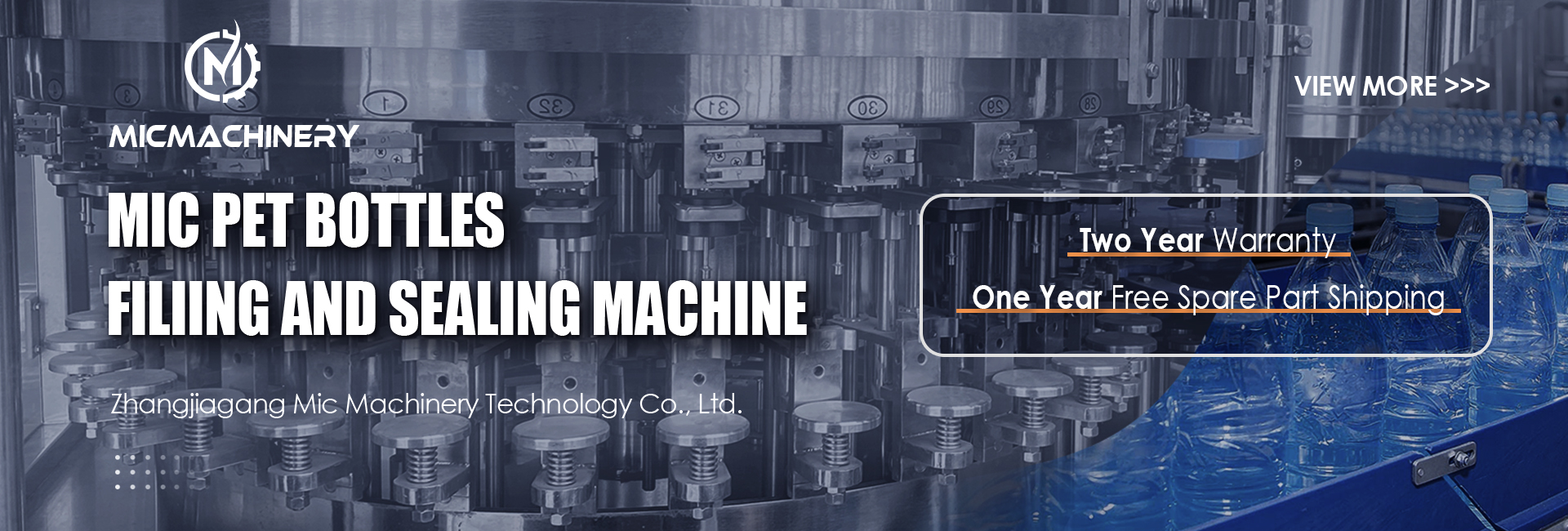
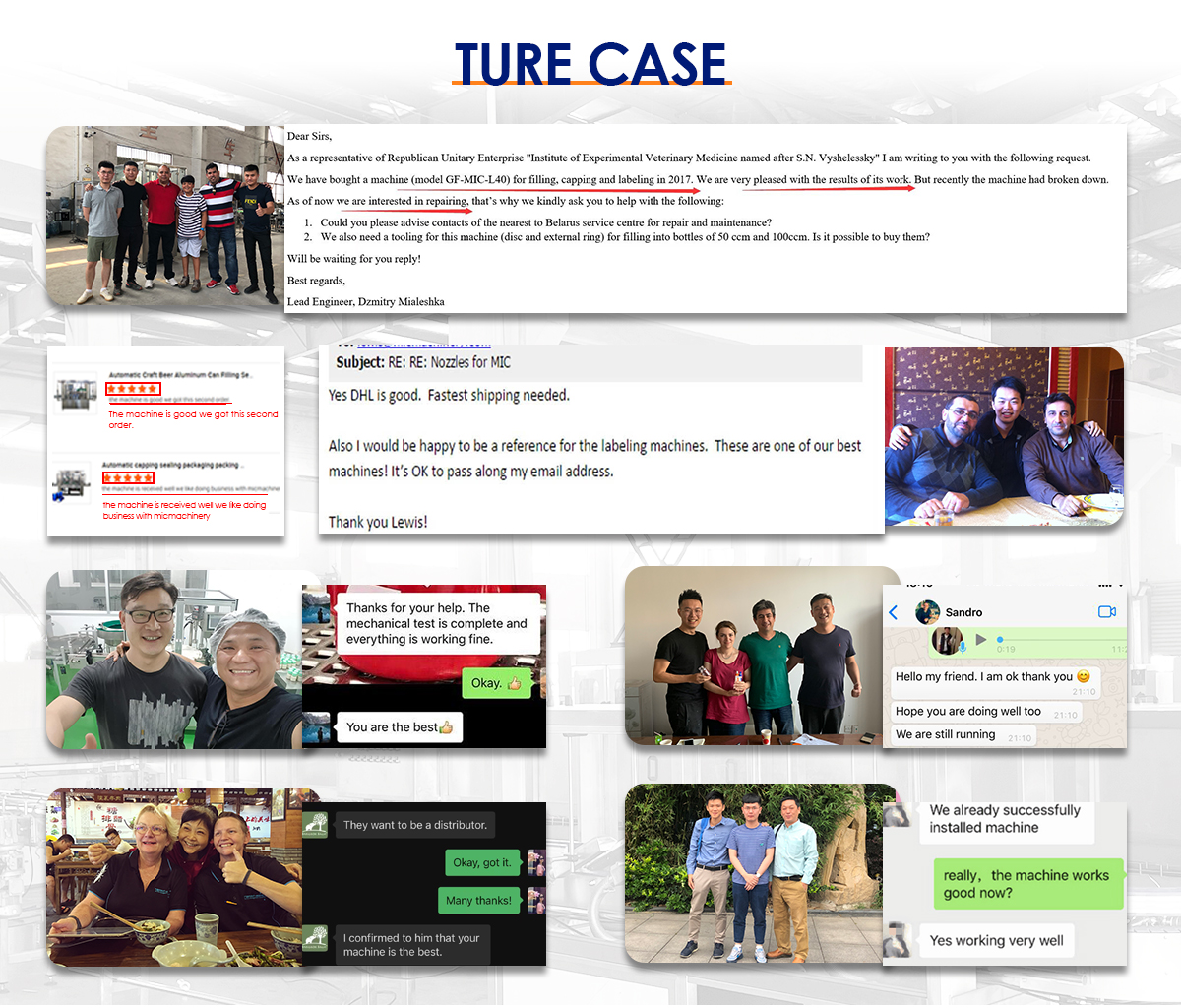
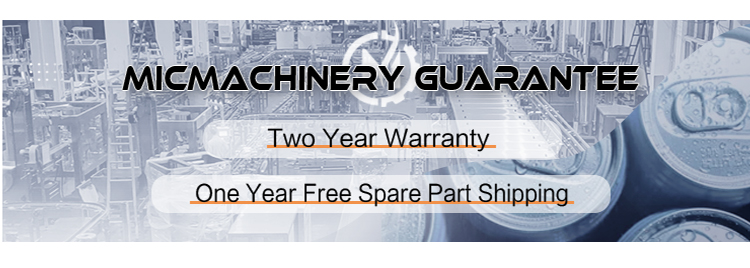
1) Bottle is entered by air conveyor, the speed of bottle entering is fast and bottle shape isn’t changed because of adopting hanging clamping bottleneck way
2) Adopting clamping bottleneck way to wash bottle mouth and avoid touching screw mouth, adopting clamping bottleneck way in the whole conveying process. When bottle type changes, you need to change the board related with bottle diameter
3) Filling adopts cylinder feeding structure, filling valve adopts high filling speed and mass flow rate valve which control liquids level accurately and without loss.
4) Screw capper adopts French advanced technology which cans screw cap promptly when clamping bottle.
5) The PLC and transducer are chosen from international famous brand, such as OMRON, MITSUBISHI.
A juice Bottle filling line is a complete system of machinery and equipment used in the food and beverage industry to automate the process of filling juice into bottles or containers. It is designed to ensure efficient and continuous production while maintaining the freshness and quality of the juice.
A juice filling line typically consists of multiple components and stations that work together seamlessly to carry out the entire filling process. These components may include bottle or container rinsing machines, filling machines, capping machines, labeling machines, and conveyor systems.
The first step in a juice filling line is the bottle or container rinsing station. This station cleans and sanitizes the bottles or containers before they are filled with juice. It ensures that the packaging is free from any contaminants or residues that may affect the quality of the juice.
Next, the bottles or containers move to the filling station, where the juice is accurately dispensed into each one. The filling machine is designed to handle different bottle sizes and fill volumes, ensuring precise and consistent filling. It may employ advanced technologies such as volumetric or gravimetric filling methods to achieve accurate measurements.
After the filling process, the bottles or containers proceed to the capping station, where secure closures are applied to seal the juice inside. This station may include different types of capping machines depending on the closure type, such as screw caps, snap caps, or corking systems.
The final stage in a juice filling line is the labeling station. Here, labels or codes are applied to the bottles or containers for identification, branding, and regulatory compliance purposes. The labeling machine can handle various label types, such as pressure-sensitive labels or shrink sleeves, and may include additional features such as date coding or batch numbering.
Throughout the entire juice filling line, conveyor systems are used to transport the bottles or containers from one station to another in a continuous and synchronized manner. These conveyors ensure smooth and efficient movement, minimizing downtime and optimizing production output.
The benefits of using a juice filling line include increased production efficiency, reduced labor costs, precise filling accuracy, improved product quality, and enhanced safety and hygiene. By automating the filling process, the line minimizes human errors, reduces the risk of contamination, and ensures consistent and reliable results.
In summary, a juice filling line is a comprehensive solution for automating the juice filling process. It integrates various machines and components to create a seamless production system, from bottle rinsing to filling, capping, and labeling. The use of a juice filling line enhances productivity, product integrity, and overall operational efficiency for manufacturers in the food and beverage industry.
A juice filling line typically consists of multiple components and stations that work together seamlessly to carry out the entire filling process. These components may include bottle or container rinsing machines, filling machines, capping machines, labeling machines, and conveyor systems.
The first step in a juice filling line is the bottle or container rinsing station. This station cleans and sanitizes the bottles or containers before they are filled with juice. It ensures that the packaging is free from any contaminants or residues that may affect the quality of the juice.
Next, the bottles or containers move to the filling station, where the juice is accurately dispensed into each one. The filling machine is designed to handle different bottle sizes and fill volumes, ensuring precise and consistent filling. It may employ advanced technologies such as volumetric or gravimetric filling methods to achieve accurate measurements.
After the filling process, the bottles or containers proceed to the capping station, where secure closures are applied to seal the juice inside. This station may include different types of capping machines depending on the closure type, such as screw caps, snap caps, or corking systems.
The final stage in a juice filling line is the labeling station. Here, labels or codes are applied to the bottles or containers for identification, branding, and regulatory compliance purposes. The labeling machine can handle various label types, such as pressure-sensitive labels or shrink sleeves, and may include additional features such as date coding or batch numbering.
Throughout the entire juice filling line, conveyor systems are used to transport the bottles or containers from one station to another in a continuous and synchronized manner. These conveyors ensure smooth and efficient movement, minimizing downtime and optimizing production output.
The benefits of using a juice filling line include increased production efficiency, reduced labor costs, precise filling accuracy, improved product quality, and enhanced safety and hygiene. By automating the filling process, the line minimizes human errors, reduces the risk of contamination, and ensures consistent and reliable results.
In summary, a juice filling line is a comprehensive solution for automating the juice filling process. It integrates various machines and components to create a seamless production system, from bottle rinsing to filling, capping, and labeling. The use of a juice filling line enhances productivity, product integrity, and overall operational efficiency for manufacturers in the food and beverage industry.

Washing Part
Washing part is mainly composed of washing pump, bottle clamps, water distributor, up turn-plate, guide rail, protection cover, spraying device, defrosting tray, rinse water take and rinse water refluxing tank.The bottle is turned upside down and centered above a spraying nozzle which directs a stream of rinse water into the bottle. After the draining period the bottle is turned over to an upright position again.

Filling Part
Filling part is mainly composed of filling barrel, filling valve (low temperature and isobar filling), filling pump, bottle hanging device / bottle pedestals, guide rail, elevating device, liquid indicator, pressure gauge, pressure regulator, etc.Rotary wheel fully made of stainless steel SUS 304. Filling valves are made of SUS316L. Filling valves are reasonably structured with accurate filling. Bottles go up and down in the function of cam through elevator, to process filling with contact to bottle-mouth.

Capping Part
Capping part is mainly composed of capping heads, cap loader (separated), cap unscrambler, cap drop rail, pressure regular, cylinder and also we need an air compressor as the auxiliary external equipment.Cap distributing chute is equipped with a photocell switch to stop the capper when there is no cap inside the chute. The capper is equipped with inlet bottle detection switch.



| Model | MIC 12-12-5 |
|---|---|
| Working section | Washing 12, filling 12, capping 5 |
| Productivity | 3000-5000BPH(Base on 500ml/bottle) |
| Air pressure | 0.4MPa |
| Air consume | 0.15m3/min |
| Washing water pressure | 0.2MPa |
| Washing water consume | Less than 1T/hour |
| Main motor power | 2.2kW |
| Total power | 5KW |
| Overall size | 2250*1650*2200mm |
| Total weight | 3500kg |
| Electrical configuration | |
|---|---|
| Touch screen | MITSUBISHI |
| Frequency converter | MITSUBISHI |
| PLC | MITSUBISHI |
| Contactor, breaker | DELIXI |
| Proximity switch | DELIXI |
| Photoelectric switch | DELIXI |
| Bearing | Harbin |
| Relay | OMRON |
| Barometer | AirTAC |
| Air cylinder | AirTAC |
| Solenoid valve | AirTAC |
Water Factor, Tirana Albania, 2012
Beer Canning Factory, Wales UK, 2017,03
Products
- Beer Filling Machine
- Juice Filling Machine
- Soda Filling Machine
- Drink Filling Machine
- Carbonated Soft Drink Filling Machine
- Beverage Filling Machine
- Labeling Machine
- Packing Machine
-
Beer Beverage Filling Machine
- Can filling machine
- Glass bottle filling machine
- Pet bottle filling machine
- Beer Filling Machine
- Beer Can Filling Machine
- Beer Bottle Filling Machine
- Semi Automatic Beer Filling Machine
- Soda Filling Machine
- Soda Bottling Machine
- Juice Filling Machine
- Juice Can Filling Machine
- Beverage Filling Machine
- Carbonated Drink Filling Machine
- Edible Oil Filling Machine
Product Catalog
- Beer Filling Machine
- Juice Filling Machine
- Soda Filling Machine
- Drink Filling Machine
- Carbonated Soft Drink Filling Machine
- Beverage Filling Machine
- Labeling Machine
- Packing Machine
-
Beer Beverage Filling Machine
- Can filling machine
- Glass bottle filling machine
- Pet bottle filling machine
- Beer Filling Machine
- Beer Can Filling Machine
- Beer Bottle Filling Machine
- Semi Automatic Beer Filling Machine
- Soda Filling Machine
- Soda Bottling Machine
- Juice Filling Machine
- Juice Can Filling Machine
- Beverage Filling Machine
- Carbonated Drink Filling Machine
- Edible Oil Filling Machine
- Can filling machine

